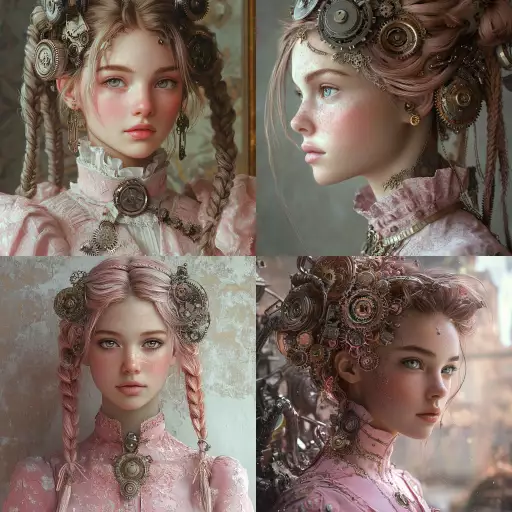Explore the Best AI Image Gallery

Beyond the Brush: How AI-Generated Visual Content is Transforming Creativity
The realm of creativity has always been a space of human expression, imagination, and innovation. But in recent years, a new force has emerged, one that promises to reshape the very landscape of artistic creation: artificial intelligence (AI) and its ability to generate visual content.
From stunningly realistic images to imaginative abstract designs, AI-powered tools are enabling artists, designers, and individuals alike to explore uncharted territories in visual expression. This blog post delves into the multifaceted impact of AI-generated visual content on the creative industry, examining its potential uses, ethical considerations, and future trends.
The Expanding Palette: Applications of AI-Generated Visual Content
- Art & Design: AI can assist artists in generating concepts, exploring different styles, and creating unique pieces. Imagine collaborating with an AI that understands your vision and helps you refine it into a tangible artwork.
- Marketing & Advertising: Businesses can leverage AI to create compelling visuals for campaigns, product mockups, and social media content. This allows for rapid iteration and personalized marketing experiences.
- Content Creation: From generating illustrations for books and articles to creating immersive visual experiences for games and virtual reality, AI expands the possibilities for storytelling and interactive content.
- Education & Research: AI-generated visuals can aid in educational settings by providing interactive simulations, visualizing complex data, and enhancing learning experiences. Researchers can also utilize AI to generate models and visualizations for scientific exploration.
Navigating the Ethical Landscape
While the potential of AI-generated visual content is undeniable, it raises important ethical considerations:
- Copyright & Ownership: Who owns the copyright to AI-generated artwork? The creator who provided the input or the AI itself? This legal grey area requires careful consideration and established guidelines.
- Bias & Representation: AI models are trained on vast datasets, which can contain biases that reflect societal inequalities. Its crucial to ensure that AI-generated content does not perpetuate harmful stereotypes or discriminatory representations.
- Job Displacement: The automation capabilities of AI may raise concerns about job displacement in creative fields. However, its also important to recognize that AI can augment human creativity and open up new roles and opportunities.
The Future of Creativity: Collaboration and Beyond
Looking ahead, the future of visual content creation is likely to be one of collaboration between humans and AI. Imagine:
- AI as a Creative Partner: Artists using AI as a tool to enhance their workflow, overcome creative blocks, and explore innovative ideas.
- Personalized Creative Experiences: AI tailoring visual content to individual preferences, creating immersive and interactive experiences that resonate with each user.
- Democratization of Creativity: AI empowering individuals with limited artistic skills to express themselves visually and participate in the creative process.
As AI technology continues to evolve, it will undoubtedly reshape the creative industry in profound ways. By embracing its potential while navigating the ethical challenges responsibly, we can unlock a future where human creativity and artificial intelligence converge to create extraordinary visual experiences.